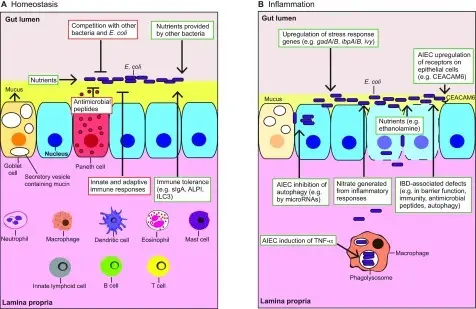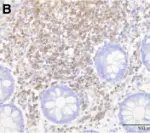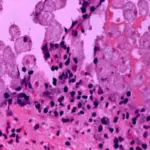Escherichia coli is a type of bacteria that normally lives in your intestines. It’s also found in the gut of some animals. Most types of E. coli are harmless and even help keep the digestive tract healthy.
What is Escherichia coli?

Events modulating E. coli colonization and fitness in the intestine. Events promoting E. coli fitness are illustrated in green boxes and those inhibiting E. coli growth are shown in red boxes. (A) At homeostasis, bacteria such as E. coli are prevented from attaching to epithelial cells (blue cells; for simplicity, villi are not shown) by a mucus layer present at the apical surface of the gut epithelium. The host immune system and the Paneth-cell-derived antimicrobial peptides regulate microbial growth. Major cell types that are involved in immune regulation of the gut microbes are illustrated in the lamina propria, where they are found. The host gut provides nutrients to support E. coli colonization, and immune tolerance mechanisms help to maintain a healthy E. coli community in the intestine. E. coli colonization is also modulated by bacterial competition for nutrients. Other bacteria can provide nutrients (e.g. mono- and disaccharides) to E. coli and promote its growth. (B) During intestinal inflammation, mucus depletion facilitates E. coli attachment to the epithelium. E. coli adjust their metabolism, and upregulate stress response genes to promote their survival. E. coli can take advantage of inflammation by using nutrients provided by dead cells and by respiring host-derived nitrate. Adherent invasive E. coli (AIEC) can disrupt the epithelial barrier, inhibit epithelial cell autophagy to promote intracellular survival, and upregulate surface receptors on epithelial cells to increase adherence. AIEC infection stimulates TNF-α expression in macrophages, which promotes their intracellular replication. IBD-associated deficiencies such as reduced secretion of antimicrobial peptides due to Paneth cell dysfunction (Paneth cells not shown) can further allow bacterial attachment, invasion and growth. CEACAM6, carcinoembryonic antigen-related cell adhesion molecule 6; gadA/B, glutamic acid decarboxylase A and B; ALPI, intestinal alkaline phosphatase; ibpA/B, inclusion body protein A and B; ILC3, group 3 innate lymphoid cells; ivy, inhibitor of C-type lysozyme; sIgA, secretory immunoglobulin A; TNF-α, tumor necrosis factor α. Microbial imbalance and intestinal pathologies: connections and contributions. Yang Y, Jobin C - Disease models & mechanisms (2014). Not Altered. CC.


